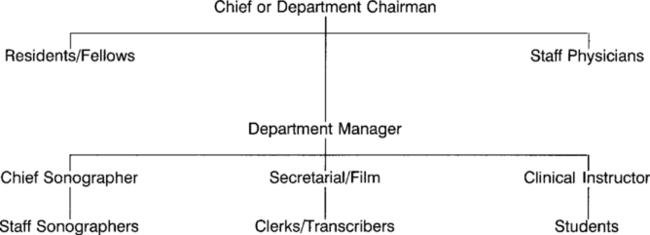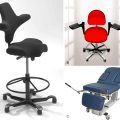Students who successfully complete this chapter will be able to do the following: • Compare and contrast the roles and functions of hospitals and clinics. • List common non-hospital sonography settings. • Identify major job search strategies. • Name the two types of resumes and when to use each. • Discuss the importance of first impressions at job interviews. • Identify the factors necessary to produce a salary-negotiating strategy. According to the U.S. Department of Labor’s Bureau of Labor Statistics (BLS), more than half of all sonographers work in hospitals, and most of the remainder work in clinics or physicians’ offices. The job forecast for sonographers is excellent because of the increased demand for diagnostic imaging among an aging American population. Continued demand is expected as health care providers increasingly use diagnostic sonography as a safer and more cost-effective alternative to other imaging procedures. Ultrasound imaging technology is expected to continue to evolve rapidly and create many new sonography procedures in parts of the body in which ultrasound traditionally has not been used. The Bureau of Labor Statistics projects an 18% growth in jobs through the year 2018 (http://www.bls.gov/oco/ocos273.xhtml#outlook). Although hospitals will remain the principal employers of sonographers, employment in clinics and physicians’ offices is forecast to grow rapidly. This is due to a strong shift toward outpatient care and the technologic advances and lower cost of ultrasound equipment that now permit point-of-care diagnosis. Additional information about working conditions, training, qualifications, and more is available at the BLS website: http://www.bls.gov/oco/ocos273.htm. The Society of Diagnostic Medical Sonography also offers a “model job description” that is helpful in formulating post-graduate plans. The information can be accessed in the career section of the SDMS website: http://www.sdms.org Hospital administration involves organizing and supporting patients’ total medical care during an in-hospital episode of illness. Hospitals are multifaceted organizations made up of many committees, departments, types of personnel, and services. They require highly trained employees, systems and controls, adequate equipment, necessary supplies and, of course, health care providers and patients. Most American hospitals are for-profit businesses and are structured similarly to large corporations with a hierarchy of authority and a board of trustees (Box 8-1). Sonography services may be part of the radiology department, the nuclear medicine department, the noninvasive imaging department, or be an adjunct to other departments such as cardiology, the vascular lab, or obstetrics (Figure 8-1). • Free clinic: provides free or low-cost care to those without medical insurance • General outpatient clinic: devoted to the care of ambulatory patients (ambulatory means able to walk) • Polyclinic: offers a wide range of health care services, including diagnostics • Specialist clinic: provides advanced diagnostic or treatment services for specific diseases or parts of the body • Fertility clinic: treats women and couples who want to become pregnant • Abortion clinic: provides abortion and related medical services to women • Ambulatory surgery clinic: offers outpatient, same-day surgery services not complicated enough to require hospitalization • Assisting/performing routine follow-up examinations and first-visit scans • Acquiring results and giving them to the appropriate physicians • Charting results and information of patient progress on weekly status checks • Obtaining all signed permission slips for invasive or other treatment procedures • Assisting the physicians with procedures • Maintaining communication with the receptionists, physician, and office staff regarding patient add-ons, patients on treatment breaks, and changes in treatment plans • Equipment and vehicle maintenance (e.g., gasoline, repairs, and administrative tasks such as keeping track of insurance/warranty policies and telephone pagers) • Maintaining their own time cards • Delivering/transmitting the diagnostic images for interpretation, if their client hospitals have no qualified physician interpreters on staff • For how long has this company been in the staffing business? • Where are most assignments located? • What type of salaries and benefits are offered? • How long must a sonographer work before receiving benefits? • What types of accommodation are provided (single/roommate housing in apartments or motels)? • What is the daily food allowance? • What transportation allowances are offered (e.g., airfare, rental car)? • What experience level does this company require (e.g., years of experience, formal education, registry credentials)? • Is the current traveling sonographer available to take questions about this type of job?
Sound Futures
Jobs outlook
Careers in sonography
Hospitals
Organization and Function

Non-Hospital Settings
Clinics
Office Practices
Mobile Ultrasound
Traveling Sonographers
![]()
Stay updated, free articles. Join our Telegram channel

Full access? Get Clinical Tree


Sound Futures






